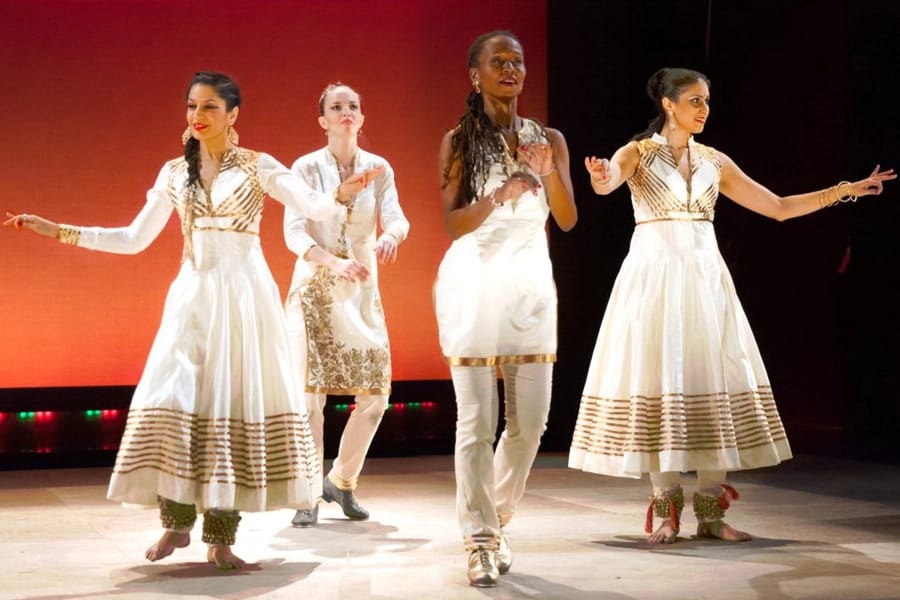
articles / Pop Culture
An Intersection of Dance Traditions
 Two dance traditions that one might guess have little in common come together in Speak: a Kathak and Tap Collaboration. The traditional Northern Indian dance form which Rachna Nivas and Rina Mehta of Leela Dance studied with Chitresh Das is performed with bare feet, and bells above the dancers’ ankles. Michelle Dorrance and Dormeshia Sumbry-Edwards will be wearing their taps, and they’re accompanied by musicians from both traditions.
Two dance traditions that one might guess have little in common come together in Speak: a Kathak and Tap Collaboration. The traditional Northern Indian dance form which Rachna Nivas and Rina Mehta of Leela Dance studied with Chitresh Das is performed with bare feet, and bells above the dancers’ ankles. Michelle Dorrance and Dormeshia Sumbry-Edwards will be wearing their taps, and they’re accompanied by musicians from both traditions.
There’s more information about the performances at the Yerba Buena Center for the Arts website.
The two styles do have some common features, despite being thousands of miles and hundreds of years apart. “One of the things that ties the two art forms together is improvisation,” Rina Mehta explains. “So at the heart of Kathak dance, is the ability to improvise. We improvise within a framework, but just like two tap dancers might compete, the Kathak dancer and the tabla player compete on stage. You know, you need to one-up eachother, you need to incorporate what they’re doing, try something new. That kind of, I think, energy exchange is at the heart of both of the traditions.” And they similarly share a history of being somewhat looked down upon. Kathak only survived as one of the forms of traditional Indian dance by ‘hiding’ in brothels for generations. Michelle Dorrance says of Tap and Kathak, “They have both been relegated as sort of a bastard dance form in our given cultures. Ours a much, much shorter story, but still honestly the longest story for America, as far as the emigrated idea of American culture is concerned, tap dance is the oldest form.”






